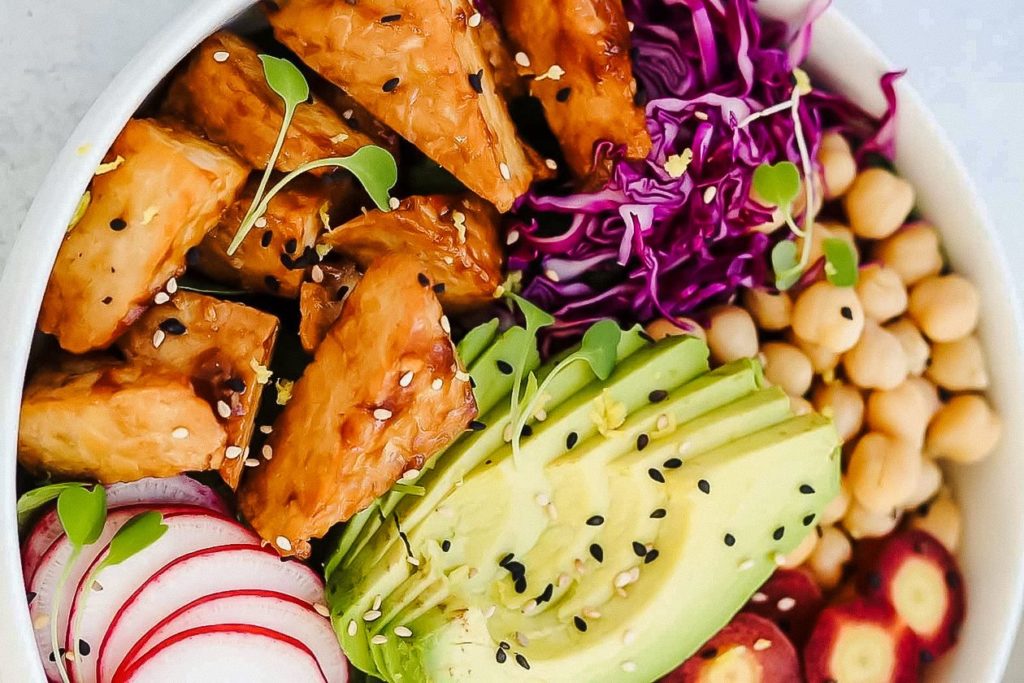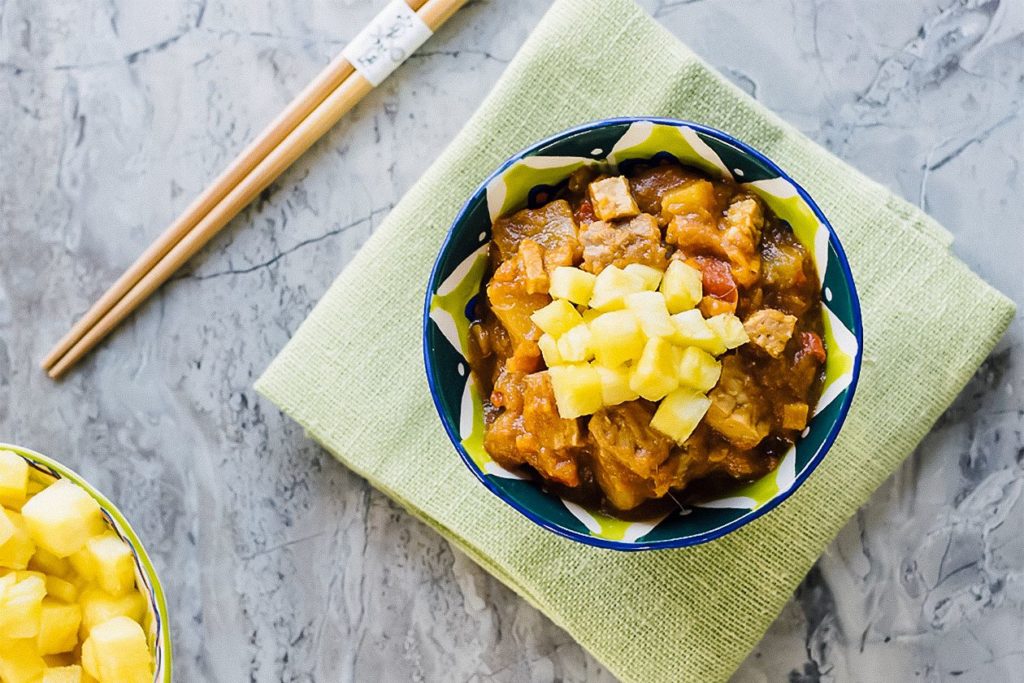What is a whole foods plant-based diet?
Fruit, vegetables, grains, nuts, and seeds are all staple ingredients. So if you grew up hating unseasoned vegetables, that might be cause for alarm. But this guide to the whole foods plant-based diet will explain exactly what it is, how to follow it, what foods to include, and how best to prepare them for maximum flavor.
What Is a Whole Foods Diet?
Whole foods are complete, natural, and unrefined (or minimally refined) ingredients. Key groups include whole grains, legumes, pulses, fruit, and vegetables.
In general, a primarily whole foods diet should include plenty of these groups, particularly fresh fruit, fresh vegetables, and complex carbohydrates such as sweet potatoes.
By avoiding animal products completely — or at least primarily focusing on plant foods — people can maximize their daily intake of vitamins, minerals, and fiber. Because of its emphasis on plants, a modern whole foods diet is almost synonymous with veganism.
However, it is seen by many as a goal or ideal rather than a “restrictive” eating plan that must be adhered to at all times.
Whole foods are typically nutrient-dense, and often more filling than their processed counterparts. While a growing body of evidence links whole, plant foods with a variety of health benefits, including longevity, and even the treatment and prevention of certain chronic diseases.
Whole foods and environmental health
Whole plant foods can be good for the planet too, especially if bought locally. Seasonal fruit and vegetables can be among the healthiest, most sustainable, and budget-friendly foods available, if you are fortunate enough to have access to them.
Because in-season produce tends to be fresh, it can also contain a higher density of vitamins, minerals, and other nutrients.
Many proponents of whole foods specifically suggest avoiding or limiting added sugar, white flour, and processed oils. And replacements such as agave nectar, wholemeal flour, and avocado or coconut oils are extremely popular.
Much like the term plant-based, a whole foods diet is open to personal interpretation. Many of those eating a whole foods diet choose to limit non-whole foods rather than eliminating them completely.
Some may also include organic or locally sourced meat and milk as “whole” foods, depending on their source and the processing methods involved.

What Is a Plant-Based Whole Foods Diet?
Plant-based describes food that comes from plants, specifically that do not contain animal products such as meat, dairy, and eggs. And a whole foods, plant-based diet combines the consumption of primarily unrefined produce with an even greater emphasis on plant-foods.
Many followers of the whole foods diet are vegan or vegetarian, and strictly exclude all foods containing animal-based food.
While the phrase plant-based directly refers to plant foods, many who follow a plant-based diet are not 100 percent vegan. Some consume small amounts of animal products, while others instead describe themselves as plant-forward or flexitarian.
Flexitarians tend to make the bulk of their diet vegetarian or vegan, but without strictly limiting themselves. The most commonly cited reason for adopting a flexitarian diet is personal health. The combination of flexitarianism and a plant-based, whole foods diet means unrestricted but primarily vegan and unrefined foods.
Plant-based food and nutrition
According to advocacy group Forks Over Knives — known for the 2011 documentary of the same name and numerous books — a whole-food plant-based diet “lets you meet your nutritional needs by focusing on natural, minimally-processed plant foods.”
In contrast, the World Health Organization (WHO) says that eating just 50 grams of processed meat per day — just four strips of bacon or one hot dog — can increase the risk of colorectal cancer by up to 18 percent.
Scientific data also links diabetes, liver disease, cardiovascular diseases, and colon cancer with meat consumption.
Key scientific advisors in the UK suggest the adoption of plant-based diets both for personal health and environmental sustainability. New Zealand’s government also advocates for a plant-based diet, and the 2019 Canadian nutrition guidelines specifically recommend a reduction in animal foods.
In addition to its link with improved physical and mental health, avoiding meat drastically reduces your environmental footprint, as animal agriculture is a leading cause of climate change. Finally, primarily eating whole plants helps to minimize cruelty against “food” animals.
Top Plant-Based Whole Foods
Some of the most nutrient-dense fruits are pineapple, which is high in manganese and vitamin C; avocado, which is high in healthy fat and potassium; and blueberries, which are rich in folate, choline, and vitamins A and E.
Apple trees are cultivated worldwide, and the high-fiber-fruit is extremely rich in vitamins C, K, and potassium.
Vegetables are at the core of a healthy whole foods diet, and cruciferous plants such as kale, broccoli, and sprouts are particularly nutritious. Tubers, including the sweet potato, are filling and affordable staples.
While white potatoes are not quite as nutrient-dense, they still contain plenty of fiber, protein, and vitamins.
For those in the UK, VegSoc keeps a handy guide to seasonal British fruit and vegetables. While staple grains such as brown rice, quinoa, millet, and oats are provide cheap and nutritious bulk in whole foods plant-based diets.
Even wholewheat bread and pasta are typically more “filling” and higher in fiber than their refined counterparts.
Beans, legumes, lentils, and pulses are also high in fiber and extremely nutritious, providing large quantities of protein with minimal fat. Dried beans and pulses are extremely cost-effective, too, particularly when bought in bulk.
Tempeh, a fermented soy-bean “loaf” similar to tofu, is a great source of protein and often considered a whole food. And the fermentation of whole ingredients increases its protein and fiber content. The fermentation process also means that tempeh contains prebiotics that help support healthy gut bacteria.
Nuts and seeds contain healthy fats, protein, and fiber. They are also particularly versatile, making them easy additions to existing meals (and effective replacements for less-healthy or refined snacks). Hazelnuts and walnuts, in particular grow naturally throughout the UK.
Plant-Based Whole Foods Recipes
Focusing on plant-based foods can be a challenge if you are unused to preparing them. It can require learning new techniques, adopting new flavors, and exploring new dishes. These seven simple, healthy, plant-based whole foods recipes are ideal for beginners and experts alike.

Lentil Spinach Curry With Coconut Rice
This nutritious curry recipe includes coconut rice — use brown or whole-grain varieties — and 8 ounces of spinach. It’s high in protein, essential vitamins, and minerals. That means it’s healthy, delicious, and nutritious.
Get the recipe here.

Black and Pinto Bean Chili
This chili uses both black and pinto beans for a high fiber, high protein meal. It’s a simple recipe that only requires 30 minutes of simmering. Top with a generous helping of cilantro for added flavor.
Get the recipe here.

Tempeh Buddha Bowl
This tempeh buddha bowl combines the fermented soy with quinoa for a high protein, versatile, and delicious meal. While the sauce combines orange and tahini for a refreshing citrus-sesame dressing.
Get the recipe here.

Split Pea and Potato Soup
This wholesome, filling, and easy-to-customize split pea soup is full of both nutritious vegetables and flavor. The whole thing takes just one hour to cook, and the split peas don’t require pre-soaking.
Get the recipe here.

Sweet and Sour Tempeh
This slow-cooked, sweet and sour tempeh is best served over steamed, brown rice. The sauce is minimal and combines pineapple and crushed ginger for flavor — with no added sugar.
Check it out here.

Tuscan Bean Soup
This Tuscan white bean soup is budget-friendly, high-protein, and nutrient-dense. The recipe is loaded with greens, vegetables, and herbs; for additional vitamins and flavors.
Check it out here.

Mexican-Style Quinoa With Beans
“This vegan Mexican quinoa is full of protein, starting with the quinoa,” says Vegan Punks, the recipe author. “When served with avocado it’s packed with even more protein.”
Get the recipe here.


